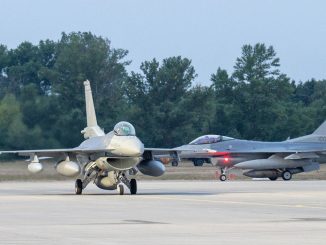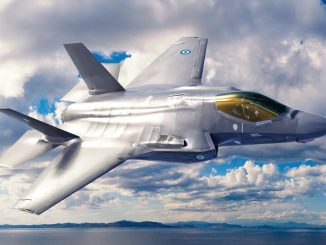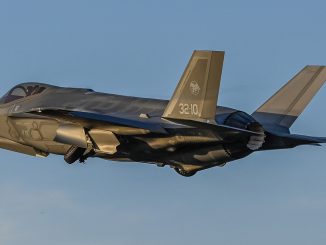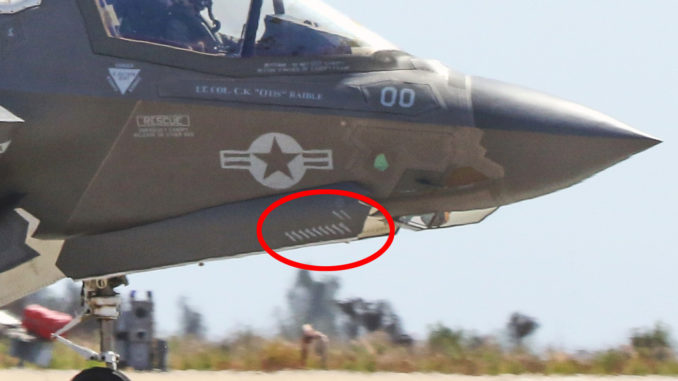
The VMFA-211 Lightning II aircraft that took part in last year’s air strikes sport new bomb markings on the front landing gear door .
On September 27, 2018, an undisclosed number of U.S. Marine Corps F-35B Lightning II STOVL (Short Take Off Vertical Landing) variant aircraft belonging to Marine Fighter Attack Squadron 211 (VMFA-211), assigned to the 13th Marine Expeditionary Unit, launched the first-ever combat mission by a U.S. military F-35 Lightning II Joint Strike Fighter.
The long-range strikes that struck insurgent targets in Kandahar Province, Afghanistan, were launched from the U.S. Navy Wasp-class amphibious assault ship USS Essex (LHD-2) on station in the Persian Gulf.
At least two aircraft, modex CF-00 and CF-01 made a stopover in Kandahar Air Field after the air strike before returning to the aircraft carrier.
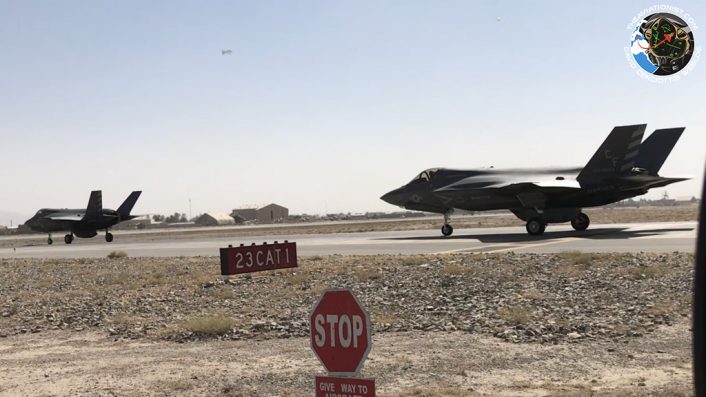
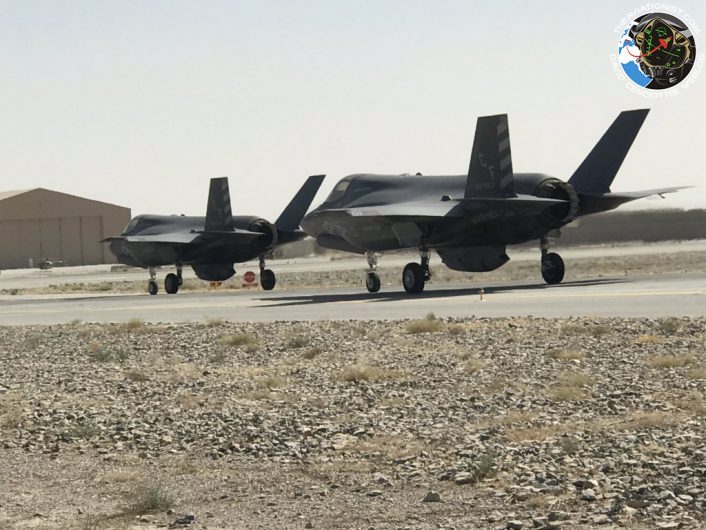
Exclusive photographs we obtained and published after the air strike showed that both aircraft carried the external gun pod (along with the Luneburg lenses/radar reflectors) while other images, released by the DoD, of the F-35B being prepared for the first air strike showed at least a GBU-32 1000-lb JDAM (Joint Direct Attack Munitions) under the weapon bay.
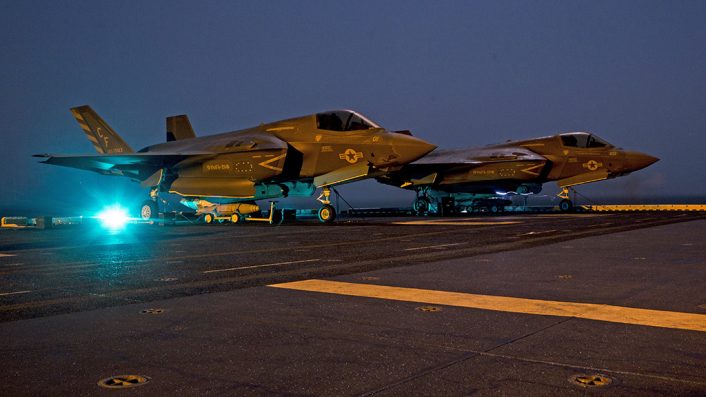
Photos later released by the U.S. Marine Corps showed that aircraft with modex CF-00 (BuNo 169415) had the name of Lt. Col. Chris “Otis” Raible stenciled in-flight refueling probe door to honor the memory of USMC Lt. Col. Christopher Raible the commander of VMFA-211 killed in an infamous attack on Camp Bastion, Afghanistan, in September 2012.

Interestingly, after returning to MCAS (Marine Corps Air Station) Yuma, Arizona, from their combat tour in the Middle East, some F-35Bs, including the famous example 169415/CF-00, of the Marine Fighter Attack Squadron 211 (VMFA-211) “Wake Island Avengers”, also known today as the “Bastion Defenders”, were spotted sporting new bomb markings.
Although we don’t have any detail about the air strikes the aircraft conducted after Sept. 27, 2018 (nor their actual loadout), the new markings show that the Marines Lightnings have seen more combat during their deployment.
The bomb markings have been applied to the aircraft’s front landing gear door and seem to show two different types of PGMs (Precision Guided Munitions): the GBU-12 500-lb LGBs (Laser Guided Bombs) on the top row, and GBU-32 JDAMs (bottom row).
The new markings were pretty evident on F-35Bs that took part in the MCAS Miramar air show.
Our own Tom Demerly was there and took some interesting shots showing the new bomb markings sported by the F-35Bs.
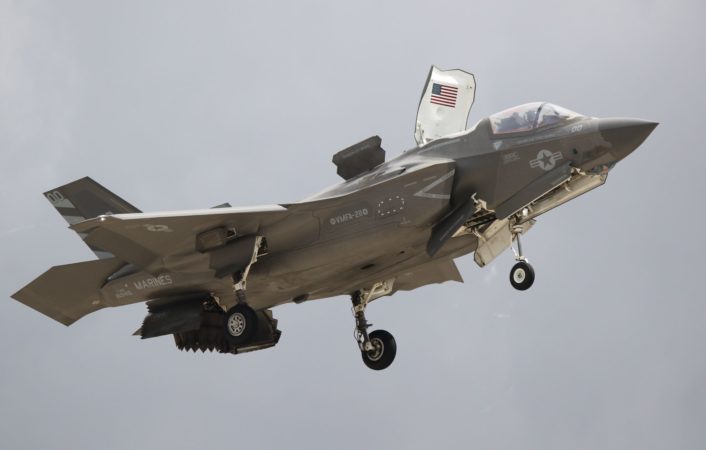
The new markings have most probably been applied to all the examples involved in the air strikes. Photos of the F-35B CF-04 have already emerged:
Here’s a recent pic of an F-35 deployed in the Middle East. Look at the landing gear door by the front wheel. Seems airstrikes have kept this one has been very busy over there. pic.twitter.com/xYpuAxWLUw
— DLAMN (@DLAMNscw) November 6, 2019
If you have any shot showing other F-35Bs with bomb markings, let us know.
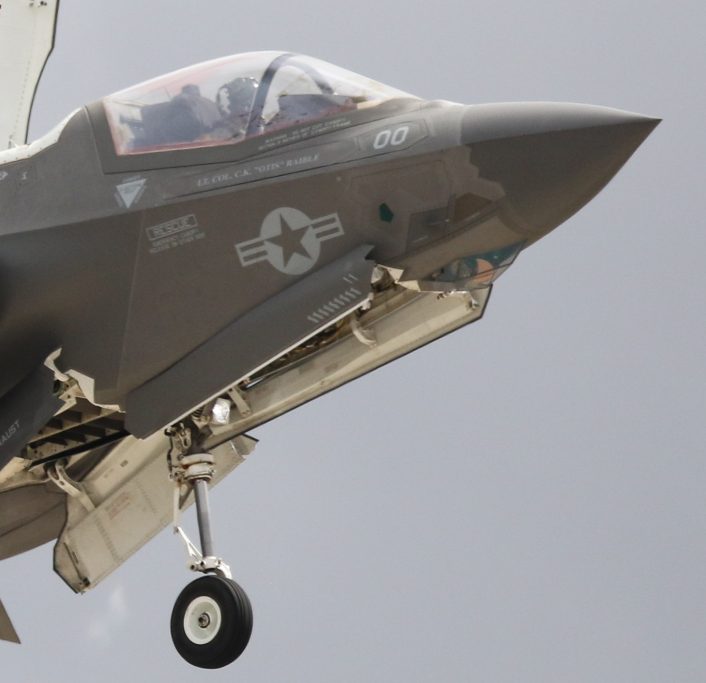
Update: one of our readers pointed out the presence of a targeting reticle above the GBU-12 silhouettes that marks the GAU-22 25mm gun pod usage.
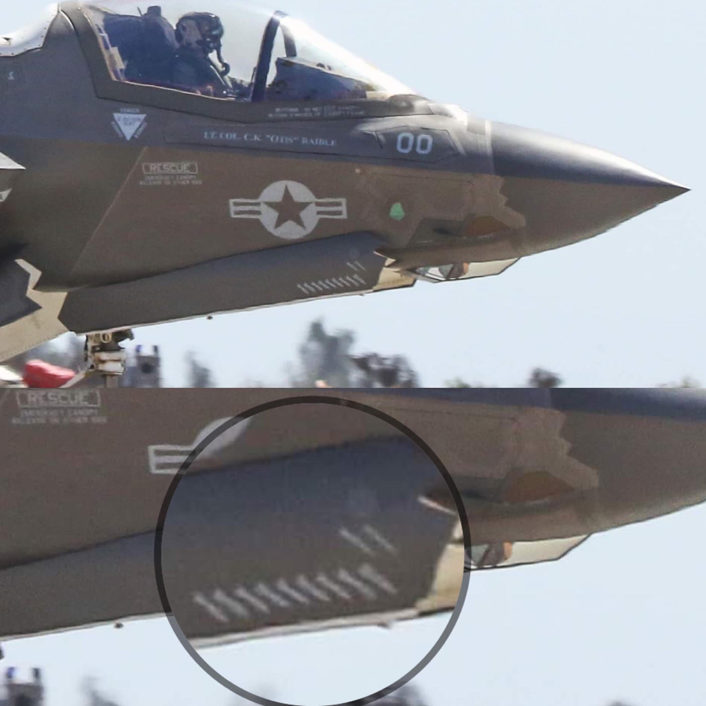
Anyway, as often explained here at The Aviationist, bomb and kill markings are a very well-known tradition in military aviation. They are pretty rare on stealth aircraft (we published an interesting image of an F-22 sporting low-viz bomb markings back in 2016), while A-10 Thunderbolt II usually sport hundreds of them. For instance, take a look at the wide array of munitions expended during they tour in support of Operation Inherent Resolve by the Warthog of the 124th Fighter Wing (Idaho ANG), from Gowen Field, Boise, Idaho, shown in this part article.

